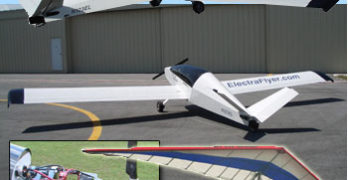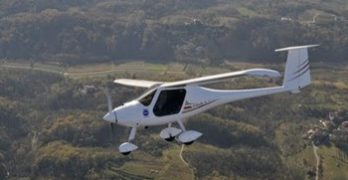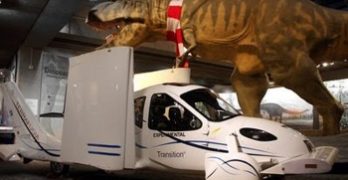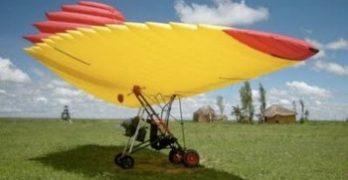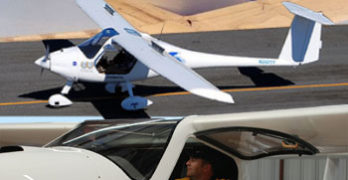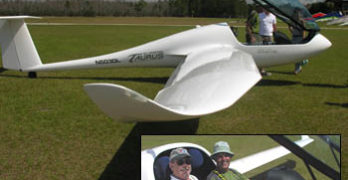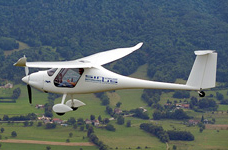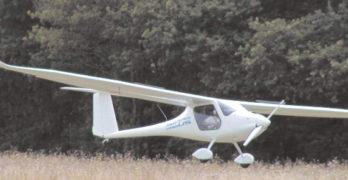Randall Fishman’s ElectraFlyer Trike pumped me up. As a trike enthusiast, my real interest is soaring. A lightweight trike with an electric motor offers real advantages (see my earlier SPLOG).
I want to climb high enough to find lift, shut off the power, and hop from thermal to thermal. To me, that’s pure flying! An electric motor starts up readily if you lose the lift. It doesn’t vibrate. It doesn’t have smelly fuel or oil. It’s quiet, other than a bit of prop noise. But was it powerful enough?
With his second project, Randall has again motivated me. The Moni he renamed ElectraFlyer C is a motor glider at heart. Again, an electric powerplant sounds perfect.
“You can fly for an hour and a half on less than $1.00 of power”…and that assumes you keep the power on. Randall and I will look each other up in Florida this winter and I’ll investigate for a further report.
Search Results for : Pipistrel
Not finding exactly what you expected? Try our advanced search option.
Select a manufacturer to go straight to all our content about that manufacturer.
Select an aircraft model to go straight to all our content about that model.
Oshkosh A-Poppin’
Posting from the road: I’m in Illinois covering a major DC-3 75th Anniversary event for Plane & Pilot for the next couple days, then on up to Oshkosh Airventure for the show all next week. I’ll be posting LSA news from the road but before I head out into the super-humid, super hot thunderstormy day, here’s a couple things to look for if you’re Oshkosh bound: *** LAMA Light Aircraft Manufacturers Association headed by Pres. Dan Johnson expects a robust event schedule for Airventure so I’ll bring you updates whenever possible. *** Some tidbits for what’s to come: *** <> The LSA Mall is full again this year even with the sluggish economy. Here’s who signed up: *** <> Flight Design (CTLS) *** <> Remos (GX) *** <> Piper (PiperSport) *** <> Arion (Lightning LS-1) *** <> Rainbow Aviation / 3Xtrim (Navigator) *** <> Breezer Aircraft (Breezer II) *** <> Pipistrel (Virus) *** <> Hansen Air Group / FK Lightplanes (FK-9 ELA) *** <> Tecnam (P-92 Echo Super) *** <> Evektor (Sportstar) *** <> Jabiru, with two models (J-230 and J-170) *** <> X-Air (LS) *** <> Progressive Aerodyne (SeaRey) *** <> IndUS Aviation’s Thorpedo *** <> Renegade Aircraft (Falcon) *** LAMA also signals a surprise announcement from IndUS at the show. *** Aviators Hot Line, the sponsor of the LSA Mall, has a new “Aviators Helping Aviators” promotion to help LAMA members.
Flying Car Weight Bump; Electric Motorglider!
After taking a few days off to boat around Lake George, NY and shoot the Red Bull Air Race in New York City, it’s time to catch up on what’s been happening. *** The Transition “Roadable Aircraft” (I can’t help but prefer the chummier “flying car”) just got a weight exemption nod from FAA for an additional 110 pounds of MTOW (max takeoff weight). That nudges the vehicle up to 1,430 pounds. *** Terrafugia‘s request for the bump is meant to provide “…the structure and equipment necessary for compliance with the Federal Motor Vehicle Safety Standards (FMVSS) which are not found in other Light Sport Aircraft.” *** They’re talking about things such as airbags, energy absorbing crumple zone and protective safety cage. *** Interestingly, Transition’s maker Terrafugia initially asked for an MTOW of 1,474 pounds. FAA in effect said “You can have what we gave the amphib makers, but no more.” *** This evokes the ultralight days, when the original 150 lb.
Minimally-Fueled “Eco” Flying Machines
Here’s one of those great events that bring out garage geniuses and newtechies alike – and in time lead to entire new industries: the Eco-Marathon Ulm. *** Think of this event/competition as a call to young designers and engineers to craft minimally-fueled flying machines. Brings to mind the European aviation meets of a century ago, where passionate tinkerers and leading-edge technical thinkers gathered to show their flying machines and inspire each other to keep pushing all the envelopes. *** The happening invites everyone with prototypes or modified production models of European-standard microlight aircraft. *** The competition features a GPS-tracked course with measurement of fuel usage at the goal. The skimpiest sipper of fuel for the rectangular 2000 meter x 250 meter course, to be flown three times consecutively at Vichy, France, will be the winner. *** A plethora of energy sources is allowed for in the rules: Unleaded fuel, Liquefied petroleum, gas to liquid, hydrogen (!), pressurized air (!!), solar, battery, hybrid (gas engine/electric motor).
LSA Dominate $300,000 NASA Challenge 2008
Amid furious preparations for Oshkosh, CAFE Foundation, the efficiency folks, announced teams that will vie for a second year of prizes. CAFE has a $300,000 purse thanks to their partnership with NASA, which is celebrating its 50th Anniversary in 2008. *** It may not surprise you to hear that four of five teams entered will fly Light-Sport Aircraft, and at least one is sure to end in the money as one prize ($10,000) is for “Quietest LSA.” Other prizes are a maximum of $150,000 for lowest community noise; two $50,000 prizes, one for “Green,” another for safety judged by handling qualities; a $25,000 speed prize; and four $3,750 “Showcase Prizes” covering quietest cabin, best angle of climb, shortest takeoff, and best glide. Winning a couple of the larger prizes is enough money “to actually buy someone their own LSA,” said CAFE President, Brien Seeley. *** The teams competing will fly a Pipistrel Virus (last year’s big winner of $165,000!–photo); a modified Diamond DA20-A1; a Dynamic WT9; the UFM-13 Lambada, and a Flight Design CTsw.
Rotax 503 Launch…then, Silence is Golden
Some of you know the Pipistrel line. Americans have seen two of their models: the Sinus and Virus (yep, those awkward, even distasteful names…except representatives prefer to say SEEN-us and VEER-us). Fortunately Taurus is easier on the American tongue, thanks to Ford and its auto model by the same name. *** I discovered Taurus is also easy on the ears as I went for a two-hour soaring flight from Wallaby Ranch with my hang gliding friend, David Ledford. His side-by-side Taurus — roomy for a soaring machine — glides beyond 40:1 and manages a sink rate barely more than 100 fpm. Those numbers translate into plenty of soaring power as we proved on a day with modest convective lift. *** Taurus is a self-launched sailplane, rather than a motorglider like Urban Air’s Lambada or Pipistrel’s own Sinus. To get aloft, we were powered by a Rotax 503 two-stroke engine that fits neatly into a cavity aft of the cockpit.
Sinus LSA-type Motorglider Soars Magnificently
One aircraft I’d waited anxiously to fly is the Sinus from Pipistrel in Slovenia. Forget the weird-sounding name (they say to pronounce it “seen-us”) because this is one impressive flying machine. I first saw it in France four years ago and my pilot report will appear in the October 2005 issue of Ultralight FLYING!. You’ll want to read that article for lots more info but the operative performance parameter is a 28-to-1 glide! I had the good fortune to fly a tricycle-gear Sinus for 45 minutes with the engine off, as it’s designed to do. Wonderful! For more info on Sinus and their other oddly named Virus aircraft, click here.
Europe Embraces Light-Sport Aircraft
Many excellent aircraft may be headed our way
Parlez-vous Française? Sprechen Sie Deutsche? Parlate Italiano? Fortunately, to understand European recreational aircraft you don’t need to speak French, German, or Italian. Yet the light-sport aircraft (LSA) that may interest you could come from countries where the mother tongue isn’t English.
Welcome to the globalized
world of light-sport
aircraft where the workers
who built your plane may speak
Polish, Russian, Hungarian, or
Latvian in addition to French,
German, or Italian.
Though many intriguing
ultralights come from Europe and
Americans have seen a few of these,
many are a complete surprise to
Yankee pilots. That will change.
Last year after EAA AirVenture
Oshkosh 2002 ended, I traveled to
Blois (pronounced Blwah), France, a
town about 200 kilometers south of
Paris. There I attended the 22nd
salon (or air show) that organizers
present at this location each year in
late summer. Let’s take a walk
around the salon at Blois.
- « Previous Page
- 1
- …
- 13
- 14
- 15


